
|
|
|
|
|
|
2024
A pivotal year for elections
2024 is an unusually busy year for national elections, with more than 70 being held in countries around the globe. This record-breaking number involves many of the world's largest democracies and encompasses 4.2 billion people, representing more than half of the global population.
Aside from the sheer number of voters, 2024 is also marked by the widespread proliferation of generative AI in political campaigns, raising concerns over the influence of deepfakes and other synthetic media. These are now highly realistic and convincing, potentially misleading the unwary. Some of the more notable elections in 2024 include those in Bangladesh, India, Indonesia, Mexico, Pakistan, Russia, South Africa, the United Kingdom, and the United States.
In the case of the United States, the election is arguably the most pivotal since the Civil War era, reflecting deep societal divisions. The Republican candidate Donald Trump faces Kamala Harris, after the increasingly unpopular and aging Joe Biden drops his bid for a second term in office. Key issues for the electorate include the economy, immigration, healthcare, climate change, abortion and reproductive rights, racial equality and criminal justice reform.
In the United Kingdom, Conservative leader Rishi Sunak is faced with a Labour Party that is much stronger and more united than before, having learned the lessons following its catastrophic defeat in the 2019 general election. After 14 years of economic mismanagement, declining living standards, record high taxes, collapsing public services, a disastrous exit from the European Union, major scandals during COVID-19, and many other issues, the Conservatives are crushed in the 2024 election, suffering one of the worst losses in their 200-year history. The centrist Keir Starmer becomes the new Prime Minister.
India, the world's largest democracy, holds its first general election since May 2019. The incumbent Prime Minister Narendra Modi, leader of the conservative Bharatiya Janata Party (BJP), faces the more centrist Indian National Congress, led by Mallikarjun Kharge. The election is fought mainly on issues such as economic growth and job creation, agricultural reforms, Hindu-Muslim tensions and other religious concerns, healthcare, education, and environmental problems such as pollution and climate change. With Modi still enjoying broad support, he is comfortably re-elected to a third five-year term. His victory leads to a further consolidation of power, increased control of the media and judiciary, and erosion of rights for the Muslim minority in the country.
In a historic first, Mexico's two leading presidential candidates are women. The country's 100 million voters must choose between Claudia Sheinbaum Pardo – former mayor of Mexico City – and Xóchitl Gálvez, a former senator. The ballot papers also include votes for over 20,000 public positions, a record number.
Meanwhile, Russian President Vladimir Putin is eligible to seek re-election, due to 2020 constitutional amendments. With a tightly controlled electoral system considered by many Western observers to be neither free nor fair, and lacking much in the way of serious opposition, Putin wins a fifth term and extends his rule until at least 2030, with a possibility of a sixth term running to 2036.
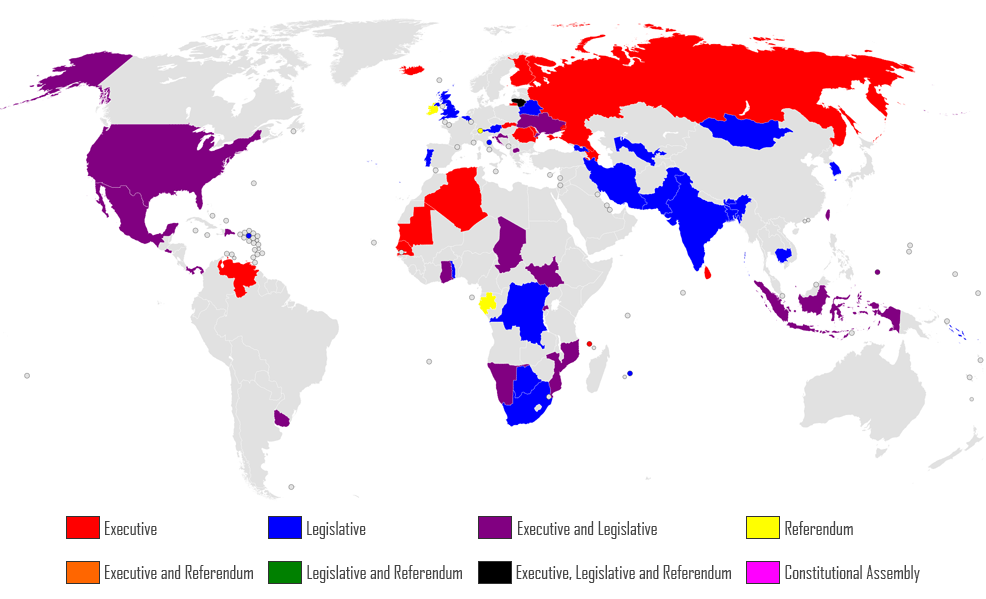
Map of national elections in 2024. Credit: Enkhsaihan2005, CC0, via Wikimedia Commons
Steamboat Willie enters the public domain
A milestone in copyright law occurs on 1st January 2024, when Disney's 'Steamboat Willie' enters the public domain. Originally released in 1928, this cartoon marked the first appearances of both Mickey Mouse and Minnie Mouse, characters who would go on to become global entertainment icons.
This transition represents the culmination of a 95-year copyright term, reflecting a historic shift in the balance between protecting creators' rights and enriching the public domain. As 'Steamboat Willie' becomes freely accessible, it paves the way for new creative interpretations and uses of Mickey and Minnie Mouse, offering a fresh canvas for artists and creators to explore and reimagine this classic piece of American animation heritage.
However, only this very first appearance of Mickey and Minnie is now in the public domain. Their more modern incarnations – and the associated merchandise, theme park attractions, and so on – remain unaffected by the expiration of Steamboat Willie's copyright. Legal challenges are subsequently made, as courts establish precisely what aspects of the character(s) and their image(s) are free for public use.*
Gemini Ultra is released by Google
Gemini Ultra is a multimodal large language model (LLM) developed by Google DeepMind, serving as the successor to LaMDA and PaLM 2. It follows two earlier products in the same family of LLMs – Gemini Pro, and Gemini Nano – and is positioned as a direct competitor to OpenAI's GPT-4.
Announced in May 2023, Google intended for Gemini to be unique in that it was not trained on a text corpus alone and was designed for multimodal tasks, meaning it could process multiple types of data simultaneously, including text, images, audio, video, and computer code.
Test results made public in December 2023 claimed to show Gemini outperforming ChatGPT on a wide range of tasks. During a press conference, the CEOs of Alphabet (Google's parent company) and DeepMind explained the three models: Gemini Nano, designed for "on-device tasks"; Gemini Pro, designed for "a wide range of tasks"; and Gemini Ultra, designed for "highly complex tasks".
Google released the Pro and Nano versions that month – making them freely available in Bard and across other apps – and stated that the Ultra model would be released in early 2024.*

Total solar eclipse across North America
A total solar eclipse occurs on 8th April 2024, visible across North America.* For observers on the continent, totality begins at the Pacific coast, moving in a northeasterly direction through Mexico, the USA, and Canada, before ending in the Atlantic Ocean. Its longest duration is four minutes and 28 seconds near the small town of Nazas, Durango, Mexico, and the nearby city of Torreón, Coahuila. This is the first total solar eclipse to be visible from Canada since 1979, the first in Mexico since 1991 and the first in the USA since 2017. It is the only total solar eclipse in the 21st century where totality is visible in all three countries.
The path of this eclipse crosses the path of the prior total solar eclipse of 21st August 2017, with the intersection of the two paths being in southern Illinois, in Makanda, just south of Carbondale. The cities of Benton, Carbondale, Chester, Harrisburg, Marion, and Metropolis in Illinois; Cape Girardeau, Farmington, and Perryville in Missouri, as well as Paducah, Kentucky, are within a 9,000 square mile intersection of the paths of totality of both the 2017 and 2024 eclipses – therefore earning the rare distinction of being witness to two total solar eclipses within a span of seven years.
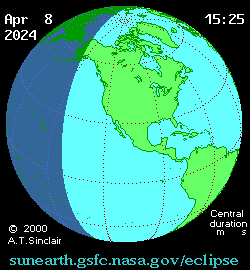
Chang'e 6 lunar sample return mission
Chang'e 6, launched in May 2024,* is the latest in a series of robotic lunar exploration missions launched by China. It attempts to obtain the first ever rock and soil samples from the far side of the Moon and return them to Earth.
The probe's design is largely the same as its predecessor, which landed on the Moon's near side in December 2020, becoming China's first successful lunar sample-return mission.
Unlike Chang'e 5, which landed in the relatively well-explored Oceanus Procellarum, Chang'e 6 targets a region that is less understood. This time, the area of study is the Apollo basin, an enormous and ancient impact crater in the southern hemisphere of the Moon's far side, of great scientific interest due to its unique geology and the potential to shed light on the Moon's early history and evolution.
To overcome the communication challenges posed by the Moon's far side – which always faces away from Earth – Chang'e 6 relies on a relay satellite, placed at the Earth–Moon L2 point. This satellite, called Queqiao ("Magpie Bridge"), enables a constant line of communication between the Earth and the lunar far side.
Chang'e 6 is designed to collect about 2 kg (4.4 lb) of samples from 2 metres (6.6 ft) below the surface, which it places in an attached ascent vehicle to be launched into lunar orbit. The ascent vehicle then makes a fully autonomous and robotic rendezvous and dock with an orbiter, where the samples are transferred into a capsule for their delivery to Earth. It is hoped that these samples will include material ejected from the lunar mantle, providing new insights into the history of the Earth–Moon system, while also revealing why the near and far sides of the Moon are so different from each other.
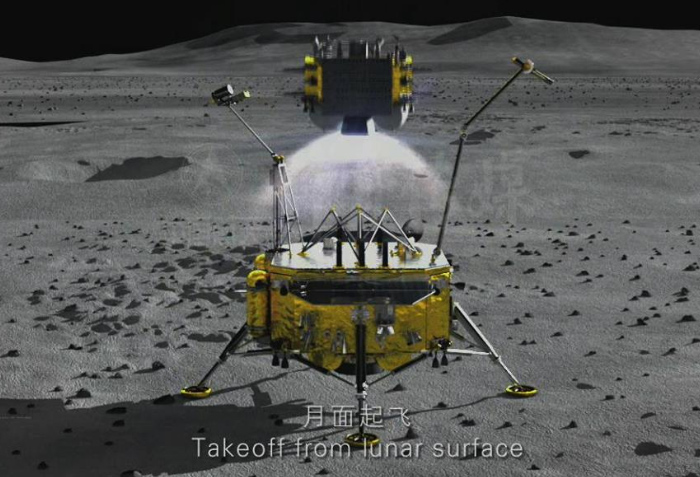
Euro 2024 is hosted by Germany
Euro 2024 is the 17th edition of the European Championship, a quadrennial tournament organised by UEFA. It is hosted by Germany – the first time it has performed this role as a unified country (West Germany had hosted the games in 1988). 51 matches are played over a period of 32 days in June and July with 24 teams competing in the tournament.
During the bid process, only two countries had put themselves forward as candidates. Alongside Germany was Turkey. However, the latter's poor record in the area of human rights, its limited hotel capacity in many cities and the scale of infrastructure required were all of concern. Germany was announced as the winner by 12 votes to 4, with one abstention, on 27th September 2018.*
As hosts, the German team qualifies automatically. This provides a boost to German football after a disastrous 2018 World Cup, when the country failed to qualify for the last 16.
A plethora of stadia were available to satisfy UEFA's minimum capacity requirement of 40,000 seats. A total of 18 cities and stadia had submitted proposals, including the 12 hosts of the 2006 FIFA World Cup, but only ten cities and stadiums are used for the competition, the largest being the 75,000-capacity Olympiastadion in Berlin.

Paris hosts the Summer Olympic Games
From 26th July to 11th August 2024, the French capital hosts the 33rd Summer Olympics. Paris becomes the second city after London (1908, 1948 and 2012) to host the Olympic Games on three occasions. 2024 also marks the centennial of the 1924 Summer Olympics, which were held in the same city, and was the last time Paris held the Olympic Games.
Bidding to host the Games started in 2015 with five candidate cities, but Hamburg, Rome and Budapest withdrew, leaving Paris and Los Angeles as the only remaining candidates. A proposal to elect the 2024 and 2028 Olympic host cities at the same time was approved by an Extraordinary IOC Session in July 2017, in Switzerland. The IOC made a deal with Los Angeles to host the 2028 Games, which made Paris the host of the 2024 Games. The formal announcement of the hosts for both Olympiads took place at the 131st IOC Session in Lima, Peru, on 13th September 2017.*
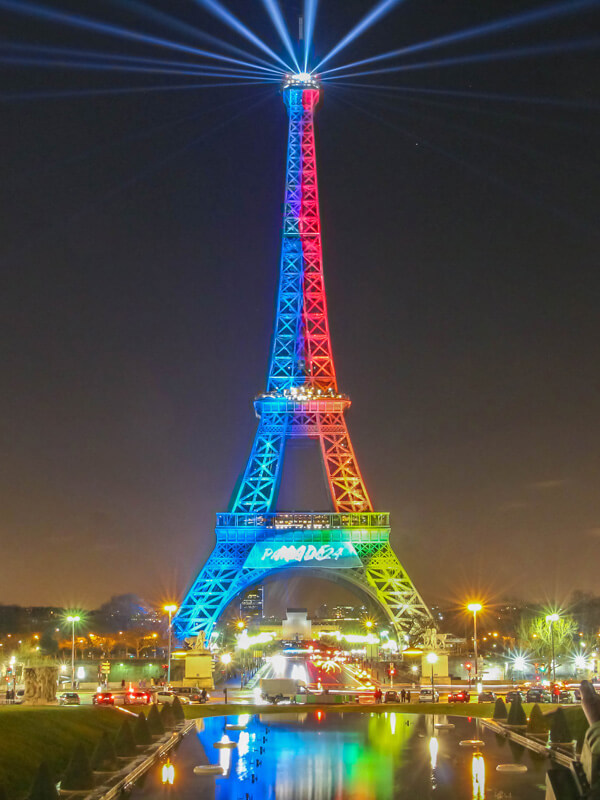
The first probe to fly into the Sun's outer atmosphere
Parker Solar Probe (formerly known as Solar Probe Plus) is a historic mission flying into the Sun's outer atmosphere (corona) for the first time. The probe travels to within 6.2 million km (4 million miles) of the Sun's surface – just four times the length of its diameter.
At such close range, an extremely strong shield is needed at the front of the spacecraft. This is made of reinforced carbon-carbon composite, able to withstand temperatures of 2,000 °C (3,632 °F). At closest approach, the Parker Solar Probe hurtles around the Sun at 430,000 miles per hour; fast enough to get from Philadelphia to Washington in one second.
The mission's primary scientific goals are:
• To determine the structure and dynamics of the magnetic fields at the
sources of solar wind.
• To trace the flow of energy that heats the corona and accelerates the
solar wind.
• To determine what mechanisms accelerate and transport energetic particles.
• To explore dusty plasma near the sun and its influence on solar wind
and energetic particle formation.
Coming closer to the Sun than any previous craft, the Parker Solar Probe uses a combination of in situ measurements and 3D imaging to revolutionise our knowledge of the physics, origin and evolution of the solar wind. Its closest approach is in December 2024.*
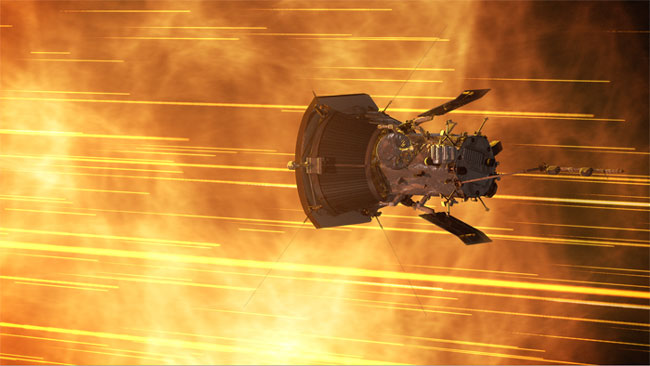
Credit: NASA's Goddard Space Flight Center
« 2023 |
⇡ Back to top ⇡ |
2025 » |
If you enjoy our content, please consider sharing it:
References
1 Disney's dominance of copyright law prevails as only the 'Steamboat Willie' version of Mickey Mouse enters public domain, Fortune:
https://fortune.com/2023/12/23/disney-mickey-mouse-copyright-public-domain-steamboat-willie/
Accessed 28th December 2023.
2 Google's new AI can outperform GPT-4, Future Timeline Blog:
https://www.futuretimeline.net/blog/2023/12/6-google-gemini-outperform-gpt4.htm
Accessed 29th December 2023.
3 National Eclipse:
https://nationaleclipse.com/
Accessed 22nd May 2022.
4 Chang'e-6, collecting the first lunar farside samples, The Planetary Society:
https://www.planetary.org/space-missions/change-6-collecting-the-first-lunar-farside-samples
Accessed 30th December 2023.
5 UEFA Euro 2024, Wikipedia:
https://en.wikipedia.org/wiki/UEFA_Euro_2024
Accessed 29th September 2018.
6 Olympic Games: Paris & LA to host 2024 & 2028 respectively, BBC News:
http://www.bbc.co.uk/sport/olympics/41259992
Accessed 17th September 2017.
7 "Assisted by a pair of orbit-shaping Venus flybys in August 2023 and November 2024, Parker Solar Probe will eventually come within 4 million miles (6.2 million kilometers) of the solar surface in December 2024 at speeds topping 430,000 miles per hour."
See Telescopes Trained on Parker Solar Probe's Latest Pass Around the Sun, NASA:
https://blogs.nasa.gov/parkersolarprobe/2022/03/03/
Accessed 27th December 2022.
![[+]](https://www.futuretimeline.net/images/buttons/expand-symbol.gif)






